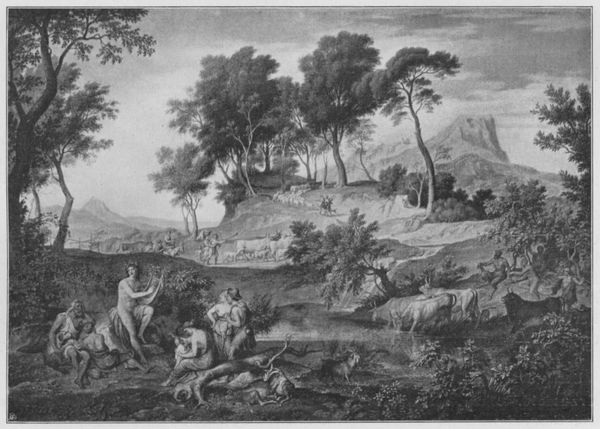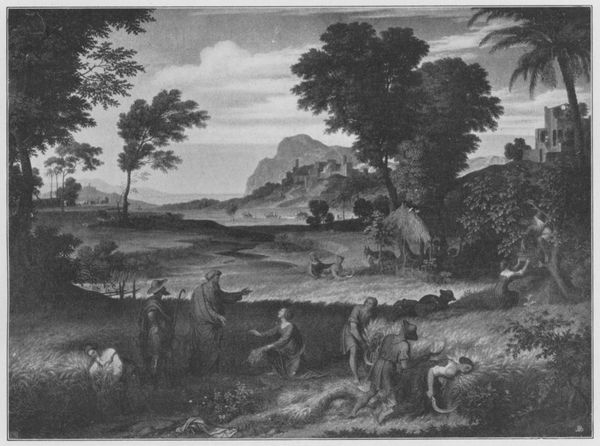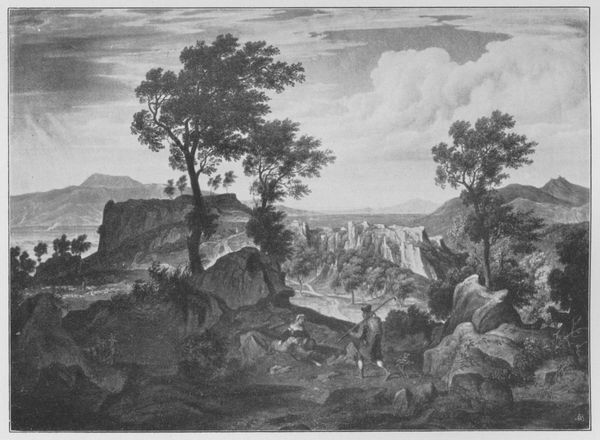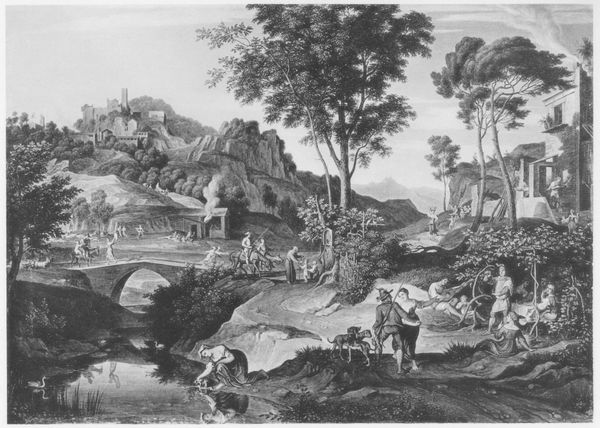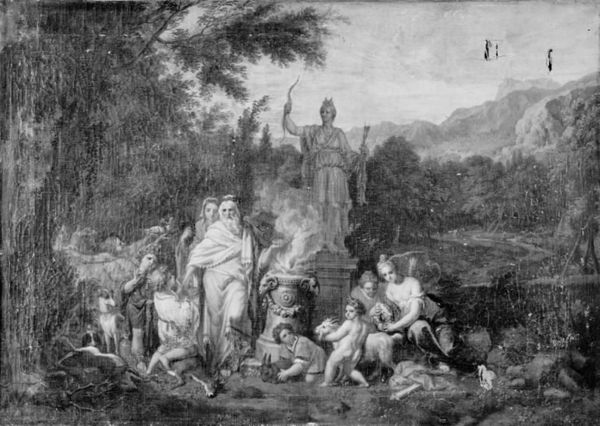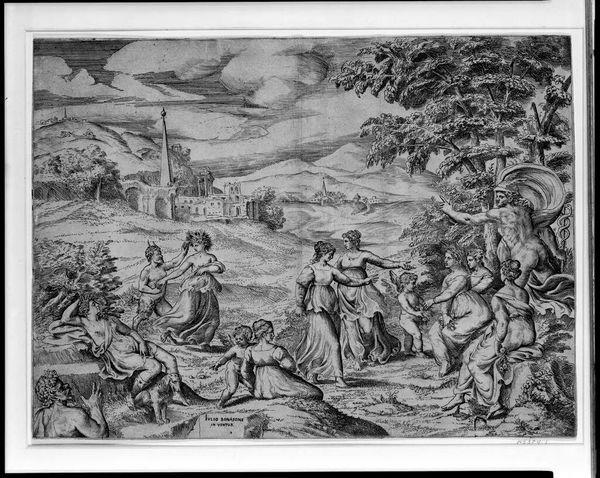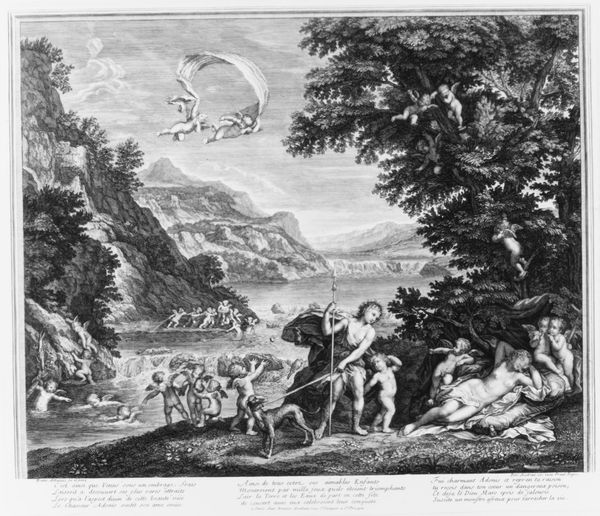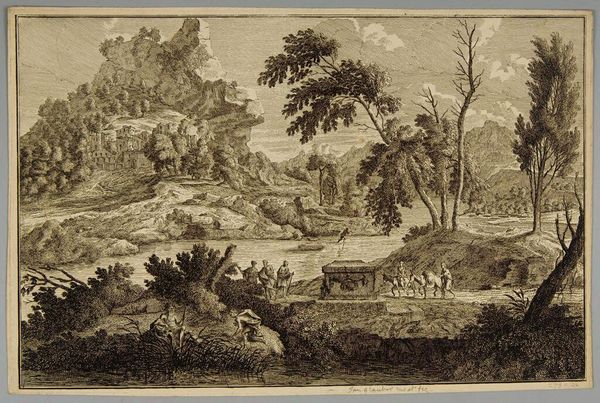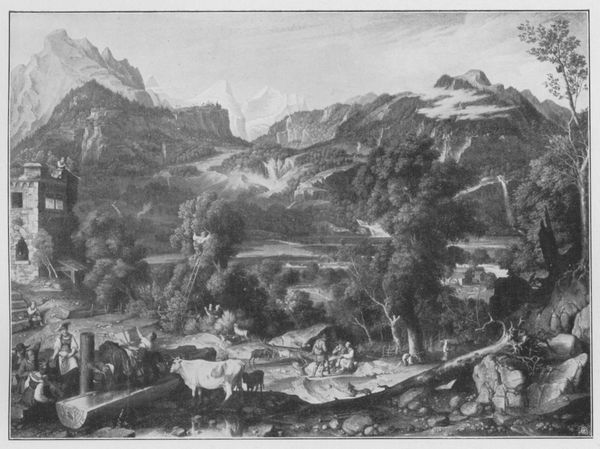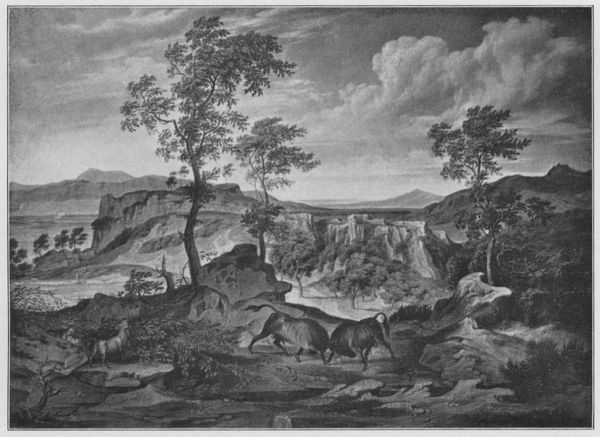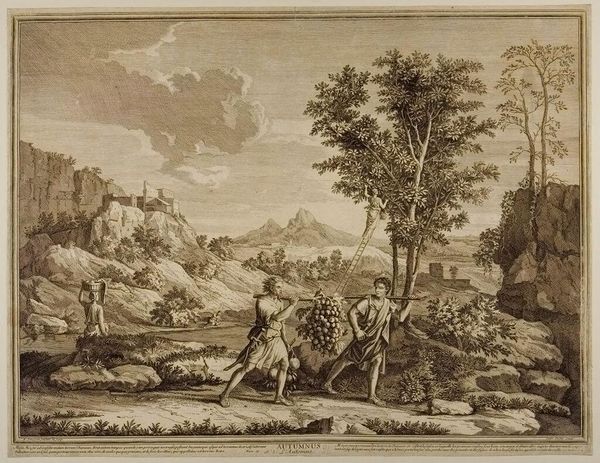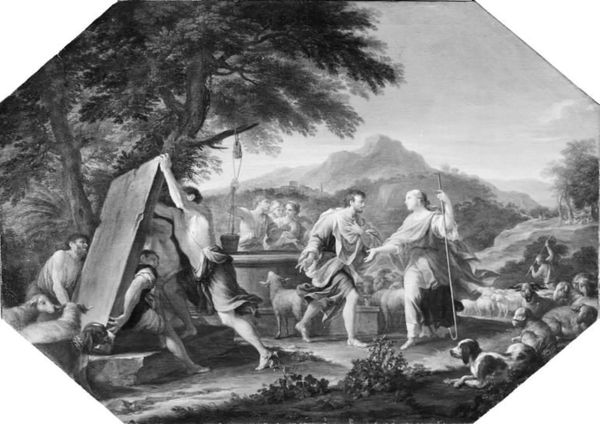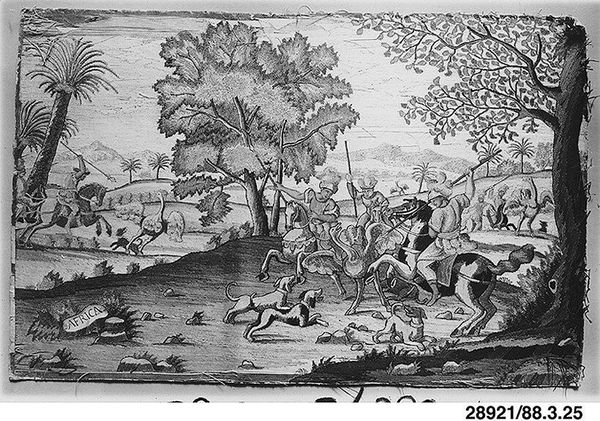
drawing, charcoal
#
drawing
#
landscape
#
charcoal drawing
#
figuration
#
pencil drawing
#
romanticism
#
charcoal
#
history-painting
#
charcoal
Dimensions: 138 x 114 cm
Copyright: Public domain
Curator: Before us is Joseph Anton Koch’s "Opfer Noahs," created in 1813. It’s a drawing, primarily using charcoal. Editor: My initial impression is of intense dramatic light amid swirling forms—a real Romantic sensibility at play. The tonal range is striking; the contrast is expertly deployed. Curator: Indeed. Koch was a significant figure in the Romantic movement. This work references the biblical narrative of Noah's sacrifice after the flood, framing it within the anxieties of early 19th-century Europe. There are some loaded implications we might consider regarding faith, repentance, and the patriarchal structures underpinning this narrative. Editor: Precisely. Observe how he manipulates the composition: the central placement of the altar and smoke draws the eye upwards, towards the heavens, underscoring the sacrifice's intended recipient. There's an interplay of horizontal and vertical lines throughout that suggests both stability and a reaching beyond. The tonal modulation is very expressive in terms of invoking both awe and wonder, as well as slight foreboding in certain spots. Curator: Considering Koch's sociopolitical context, and his participation in an artistic fraternity rooted in a rejection of the then-current sociopolitical order in Europe, this idealized, post-diluvian scene reflects an longing for purification and renewed divine contract, and hints towards reactionary desires. Editor: It's remarkable how Koch balances this rather theatrical sense of grand scale with such precise linework. The detail is almost hyper-real—a strategy for capturing that sublime feeling, one that almost renders you mute, even in the presence of this medium-sized drawing. Curator: But isn't the depiction also problematic? The unquestioned power dynamic, Noah as patriarch re-establishing dominion... there’s a complex tension embedded within what might appear a straightforward act of gratitude, no? This tension could very easily extend into the period in which Koch was producing, during times of serious and radical shifts to conceptions of human rights across many axes of social progress. Editor: It’s true, the historical framework demands a critical gaze. I just think the artistic mastery allows entry to the complexity of the matter and invites discussion. The play of line and light, even independently from contextual factors, suggests a great deal about the mood. Curator: By placing the art within its socio-political timeframe, and questioning our modern ethical standpoints, new pathways toward comprehension can start. Thank you for lending the dialogue an extra-artistic element and nuance that pushes interpretation beyond aesthetics alone. Editor: It’s the interplay of the image and its theoretical framework that brings the dialogue forward, don’t you think?
Comments
No comments
Be the first to comment and join the conversation on the ultimate creative platform.
